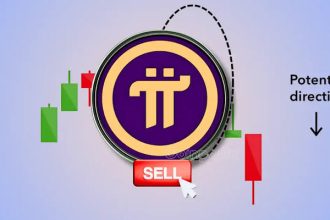Core is made to be quick and user-focused. Given the wide range of factors that influence early market development, it is important to draw attention to three specific levers or switches in the protocol’s architecture. The three controls control:
1. What to do with early CORE token rewards received by the DAO.
2. What CORE’s burn rate should be.
3. What quantity of CORE tokens should the Treasury delegate to validators.
These three levers are now in use with their default configurations, however they were created with a potential future for Core community decisions in mind.
1. Recycling Early Token Rewards
Early validator rewards included those that were recycled into DAO-controlled addresses:
- The default fee address was used to send early Genesis Validator incentives and staking rewards.
- DAO Validator payouts were collected to different fee addresses.
- The default fee address has a restricted amount of CORE tokens (currently 2,000,000) reserved so that they can be used for a variety of partners and ecosystem projects.
In conclusion, many of the early CORE token payouts are now located in DAO addresses. Determining what to do with these CORE tokens is the key in this situation. To compensate people who are protecting the Core network, the default configuration recycles them into validator rewards. The Core protocol was created with flexibility in mind, allowing the community to alter the present settings so that these tokens might be burned, given to CORE holders, or used for other things.
2. Burn Rate
As shown in the whitepaper, Core is set up to allow for the burning of a portion of block rewards and transaction fees, which reduces the supply of CORE tokens in circulation. In the end, the lever defining the precise proportion is under the authority of on-chain community governance.
Rewards to be burned were initially, and for a while, moved to the DAO treasury system contract, but have since been burned once proposal 11 was approved. Furthermore, burning staking incentives that were forfeited due to stakers not performing their duties for the designated 24 hours. Transaction fees are now defaulted to 10% burn on the lever.
3. Staking Market Stability
The third lever, which has to do with early network sustainability, is the amount of CORE tokens that the Treasury delegated to validators. Core’s on-chain economics must stabilize, particularly with relation to staking incentives, for the Core network to preserve homeostasis. The stability of the CORE token and network as a whole could be harmed by staking incentives that fluctuate and spike.
The Core DAO Treasury has been built with the ability to delegate CORE to validators in order to mitigate staking incentives due to the variability of staking payouts during early market development. In order to balance the reward stabilization lever, Core DAO may continue to stake additional CORE until the reward rate equals that of other significant L1s via proof of stake consensus.
Keep in mind that while the DAO earns rewards from its staked CORE, those rewards must be recycled into the pool of validator rewards that isn’t currently being utilised. The incentives of Core’s end users to stake the token and use it for other network operations should be balanced by the steady and consistent increases in staked CORE.
What is Core DAO?
Core DAO is the official decentralized organization developing the Satoshi Plus ecosystem. It represents an opportunity for miners to access new revenue streams by contributing hash power to the chain. Inspired by the principles of both blockchains, Core displays a deep appreciation for the crypto ecosystem’s history and an even greater excitement for Core’s role in its future.












